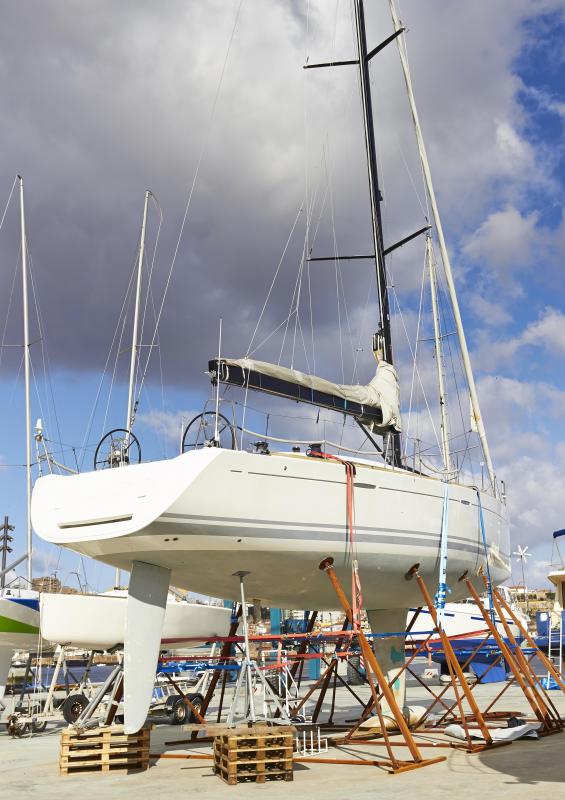At AllThingsNature, we're committed to delivering accurate, trustworthy information. Our expert-authored content is rigorously fact-checked and sourced from credible authorities. Discover how we uphold the highest standards in providing you with reliable knowledge.
What is a Barnacle?
The common barnacle is a small crustacean that lives in the "upper zone", an area of the beach that the water reaches during high tide. They are arthropods and have a close kinship to crabs, prawns, and lobsters, and in a more general way, insects and spiders.
A barnacle is an incredibly interesting sea creature. At first glance, it looks deceptively like a mollusk, and like mollusks, they attach themselves to rocky surfaces. They can usually be found affixed to boats, piers, and any other uneven surface that may be in contact with shallow water at regular intervals. Another remarkable trait of the barnacle is that it is hermaphroditic, containing both male and female reproductive organs.
Barnacles reproduce by fertilizing the eggs of its neighbors. The fertilized eggs remain within its parent's shell until they develop into nauplius larvae. There can be over 10,000 naupli within one parent's shell.
When the naupli are ready, they are released into the ocean as plankton. The nauplius will then develop through various molt stages until it reaches another larval stage and becomes a cyprid, where it develops a carapace or a kind of shell.

As a cyprid, this complex marine animal will cease to feed, choosing instead to simply wait for the right time to attach itself to an acceptable surface. When this is done, the barnacle will molt and rotate, making sure that its appendages face forward, which will gradually change into feathery cirripeds. These long limbs will act as a kind of plankton sweeper, which is how it gathers its food. Once the barnacle reaches this stage in its development, it will have graduated into adulthood. The barnacle will then live the rest of its life attached to one spot and will not be able to move or swim about. In short, it is now at the mercy of the elements.
Some kinds of barnacles are the rock barnacle, honeycomb barnacle, six-plated barnacle, and rosette barnacle.
Frequently Asked Questions
What exactly is a barnacle?

A barnacle is a type of marine crustacean that belongs to the subclass Cirripedia within the arthropod phylum. Unlike their mobile relatives like crabs and lobsters, barnacles lead a sedentary life, attaching themselves permanently to hard surfaces such as rocks, boat hulls, and even whales. They are encased in a hard shell and feed by filtering plankton from the water with their feather-like appendages.
How do barnacles attach themselves to surfaces?
Barnacles secrete a fast-curing cement that is among the most powerful natural adhesives known, allowing them to firmly attach to surfaces underwater. According to studies, this cement can withstand shear stresses of about 5,000 pounds per square inch. They utilize this adhesive to permanently fix their protective plates to a variety of surfaces, ensuring they remain anchored throughout their adult lives.
Do barnacles harm the surfaces they attach to?
While barnacles themselves do not directly damage the surfaces they attach to, their presence can be detrimental. For instance, on boat hulls, barnacle accumulation increases drag, leading to higher fuel consumption and maintenance costs. On marine animals like whales, heavy barnacle infestation can cause skin irritation and may potentially affect the host's swimming efficiency, although many species coexist without significant harm.
What do barnacles eat and how do they feed?
Barnacles are filter feeders, consuming plankton and detritus from the water column. They feed by extending their modified legs, called cirri, into the water to catch food particles. The cirri are covered in fine hairs that help trap the plankton. This feeding strategy allows them to thrive in nutrient-rich marine environments where water currents bring a steady supply of food.
Can barnacles live in freshwater environments?
Barnacles are predominantly marine creatures, with the vast majority of species found in saltwater environments. However, a few species have adapted to brackish waters, and even fewer can be found in freshwater. These are exceptions rather than the rule, as barnacles have evolved to cope with the salinity levels and other conditions present in marine ecosystems.
How do barnacles reproduce?
Barnacles have a unique reproductive strategy. Despite being sessile, they are hermaphroditic, meaning each individual has both male and female reproductive organs. They reproduce through a process called cross-fertilization, where they extend a long, flexible reproductive organ to transfer sperm to a neighboring barnacle. Some species can also self-fertilize if a mate is not within reach.
AS FEATURED ON:
AS FEATURED ON:












Discuss this Article
Post your comments